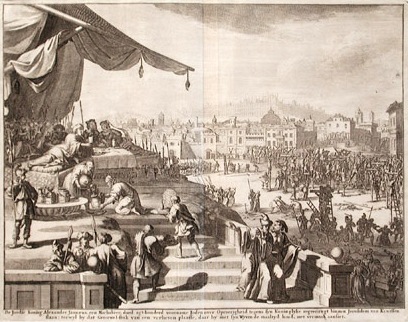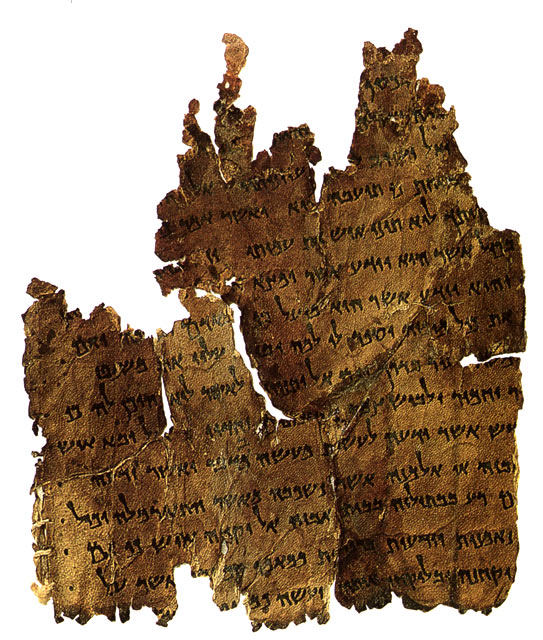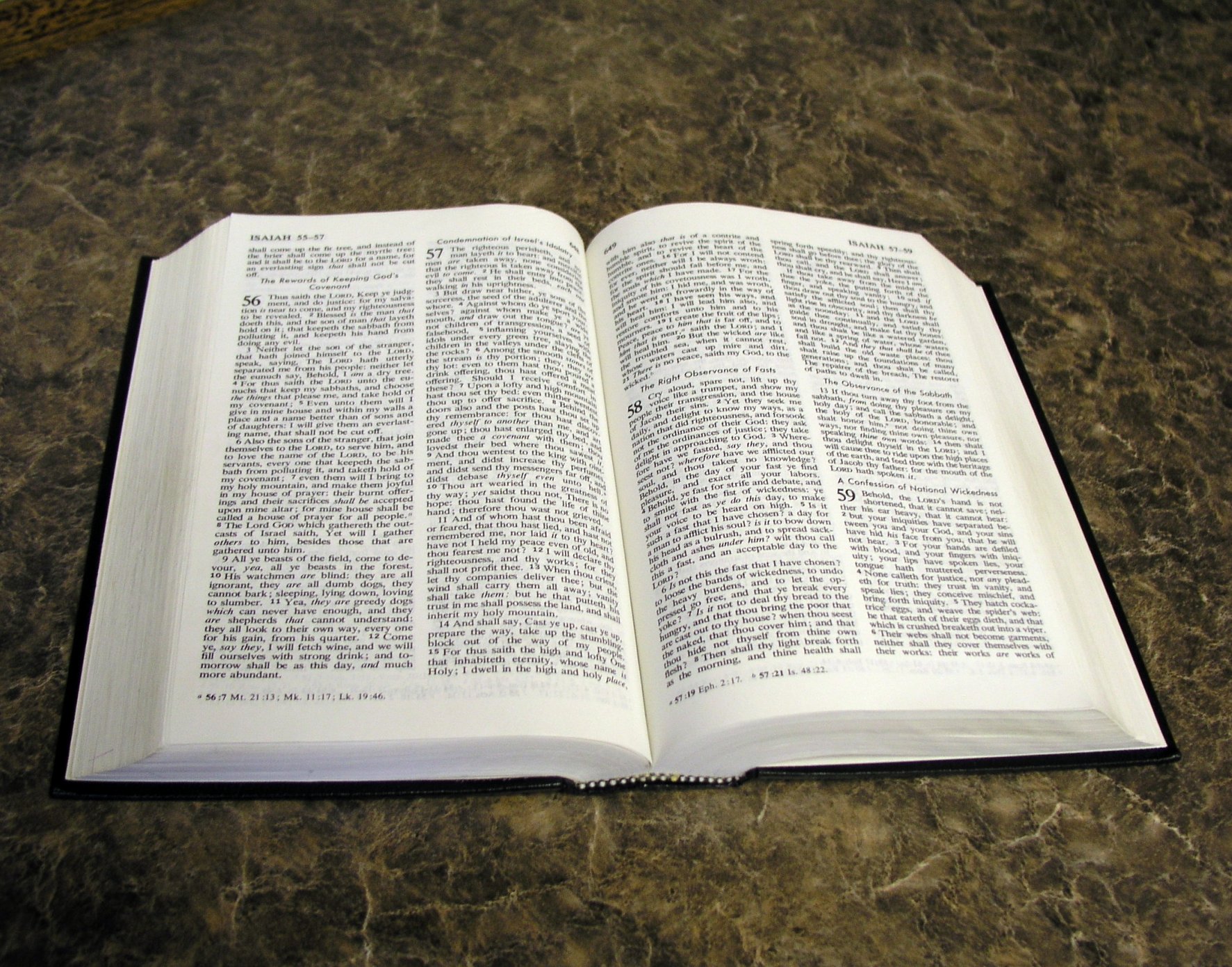|
Pesher
''Pesher'' (; , pl. ''pesharim''), from the Hebrew root meaning "interpretation," is a group of interpretive commentaries on scripture. These commentaries became known from the discovery of the Dead Sea Scrolls. The texts give a theory of scriptural interpretation of a number of biblical texts from the Hebrew Bible, such as Habakkuk and Psalms. The authors of the ''pesharim'' claimed that scripture is written in two levels; the surface level for ordinary readers with limited knowledge, and the concealed level for specialists with higher knowledge. For example, the Habakkuk Pesher (1QpHab) teaches that God has made known to the Teacher of Righteousness, a prominent figure in the history of the Essene community, "all the mysteries of his servants the prophets" (1QpHab VII:4–5). Types There are two types of ''pesharim'' found in the dead sea scrolls: ''"Continuous pesharim"'' and ''"Thematic pesharim."'' Continuous The first type of pesharim, ''continuous pesharim'', go t ... [...More Info...] [...Related Items...] OR: [Wikipedia] [Google] [Baidu] |
Dead Sea Scrolls
The Dead Sea Scrolls, also called the Qumran Caves Scrolls, are a set of List of Hebrew Bible manuscripts, ancient Jewish manuscripts from the Second Temple period (516 BCE – 70 CE). They were discovered over a period of ten years, between 1946 and 1956, at the Qumran Caves near Ein Feshkha in the West Bank, on the northern shore of the Dead Sea. Dating from the 3rd century BCE to the 1st century CE, the Dead Sea Scrolls include the oldest surviving manuscripts of entire books later included in the biblical canons, including Deuterocanonical books, deuterocanonical manuscripts from late Second Temple Judaism and extrabiblical books. At the same time, they cast new light on the emergence of Christianity and of Rabbinic Judaism. Almost all of the 15,000 scrolls and scroll fragments are held in the Shrine of the Book at the Israel Museum located in Jerusalem. The Israeli government's custody of the Dead Sea Scrolls is disputed by Jordan and the Palestinian National Authority, P ... [...More Info...] [...Related Items...] OR: [Wikipedia] [Google] [Baidu] |
Habakkuk Commentary
The Habakkuk Commentary or Pesher Habakkuk, labelled 1QpHab ( Cave 1, Qumran, pesher, Habakkuk), was among the original seven Dead Sea Scrolls discovered in 1947 and published in 1951. Due to its early discovery and rapid publication, as well as its relatively pristine preservation, 1QpHab is one of the most frequently researched and analyzed scrolls of the several hundred now known.Bernstein, Moshe J. "Pesher Habakkuk." ''Encyclopedia of the Dead Sea Scrolls''. Oxford; New York: Oxford University Press, 2000, p.647 Description Physical The scroll is roughly from end to end, with thirteen columns of Herodian script written on two pieces of leather, sewn together with linen thread. Most of the columns are missing their lowest lines; the first column is nearly completely lost, and there is a hole through the center of the second column. The third chapter of Habakkuk is missing entirely from the pesher, but it was left out intentionally, not destroyed by aging (most of the las ... [...More Info...] [...Related Items...] OR: [Wikipedia] [Google] [Baidu] |
Wicked Priest
Wicked Priest (; Romanization of Hebrew, Romanized Hebrew: ''ha-Kohen, kōhēn hā-rāš'ā'') is a sobriquet used in the Dead Sea Scrolls ''pesher, pesharim'', four times in the Habakkuk Commentary (1QpHab) and once in the Commentary on Psalm 37 (4QpPsa), to refer to an opponent of the "Teacher of Righteousness." It has been suggested that the phrase is a pun on "ha-kōhēn hā-rōš", as meaning "the Kohen Gadol, High Priest", but this term for the High Priest was obsolete at the time. He is generally identified with a Hasmonean (Maccabees, Maccabean) High Priest or Priests. However, his exact identification remains controversial, and has been called "one of the knottiest problems connected with the Dead Sea Scrolls." The most commonly argued-for single candidate is Jonathan Apphus, followed by his brother Simon Thassi; the widespread acceptance of this view, despite its acknowledged weaknesses, has been dubbed the "Jonathan consensus." More recently, some scholars have argued th ... [...More Info...] [...Related Items...] OR: [Wikipedia] [Google] [Baidu] |
Damascus Document
The Damascus Document is an ancient Hebrew text known from both the Cairo Geniza and the Dead Sea Scrolls.Philip R. Davies, "Damascus Document", in Eric M. Meyers (ed.), ''The Oxford Encyclopedia of Archaeology in the Near East'' (Oxford University Press, 1997). It is considered one of the foundational documents of the ancient Jewish community of Qumran. The Damascus Document is a fragmentary text, no complete version of which survives. There have been attempts to reconstruct the original text from the various fragments. The medieval recension appears to have been shorter than the Qumran version, but where they overlap there is little divergence. The correct ordering of all the Qumran fragments is not certain. The Damascus Document's primary body of composition is a compilation of sectarian laws that have been coupled with historical information on the sect, and utilize the same figure names used in the group's ''pesharim'' commentaries. As the rules permit a woman to marry and p ... [...More Info...] [...Related Items...] OR: [Wikipedia] [Google] [Baidu] |
Pesher On Genesis
The Pesher on Genesis, or Commentaries on Genesis, is part of the collection of the Dead Sea Scrolls found in caves near the archaeological site of Qumran about a mile off the Northwestern shore of the Dead Sea. There are four fragmentary manuscripts that have been grouped together from Cave 4: 4Q252, 4Q253, 4Q254, and 4Q254a which contain interpretations of the Book of Genesis. The most extensive of the manuscripts is 4Q252 which contains 6 fragments. They date from mid 1st century BCE (Hasmonean period) to late 1st century CE (Herodian period). They are all written in Hebrew Hebrew (; ''ʿÎbrit'') is a Northwest Semitic languages, Northwest Semitic language within the Afroasiatic languages, Afroasiatic language family. A regional dialect of the Canaanite languages, it was natively spoken by the Israelites and ... on parchment. 4Q252 4Q252 or 4QCommentary on Genesis A, as it was called by the final editor George Brooke, is dated using a paleographical method back to ... [...More Info...] [...Related Items...] OR: [Wikipedia] [Google] [Baidu] |
Davidic Messiah
The Messiah in Judaism () is a savior and liberator figure in Jewish eschatology who is believed to be the future redeemer of the Jews. The concept of messianism originated in Judaism, and in the Hebrew Bible a messiah is a king or High Priest of Israel traditionally anointed with holy anointing oil. However, messiahs were not exclusively Jewish, as the Hebrew Bible refers to Cyrus the Great, an Achaemenid emperor, as a messiah for his decree to rebuild the Jerusalem Temple. In Jewish eschatology, the Messiah is a future Jewish king from the Davidic line, who is expected to be anointed with holy anointing oil and rule the Jewish people during the Messianic Age and world to come. The Messiah is often referred to as "King Messiah" (, ). Jewish messianism gave birth to Christianity, which started as a Second Temple period messianic Jewish religious movement. Etymology In Jewish eschatology, the term Messiah refers specifically to a future Jewish king from the Davidic line, who i ... [...More Info...] [...Related Items...] OR: [Wikipedia] [Google] [Baidu] |
Exegesis
Exegesis ( ; from the Ancient Greek, Greek , from , "to lead out") is a critical explanation or interpretation (philosophy), interpretation of a text. The term is traditionally applied to the interpretation of Bible, Biblical works. In modern usage, exegesis can involve critical interpretations of virtually any text, including not just religious texts but also philosophy, literature, or virtually any other genre of writing. The phrase ''Biblical exegesis'' can be used to distinguish studies of the Bible from other critical textual explanations. Textual criticism investigates the history and origins of the text, but exegesis may include the study of the historical and cultural backgrounds of the author, text, and original audience. Other analyses include classification of the type of literary genres presented in the text and analysis of grammar, grammatical and syntax, syntactical features in the text itself. Usage One who practices exegesis is called an ''exegete'' (; from Greek ... [...More Info...] [...Related Items...] OR: [Wikipedia] [Google] [Baidu] |
Psalms
The Book of Psalms ( , ; ; ; ; , in Islam also called Zabur, ), also known as the Psalter, is the first book of the third section of the Tanakh (Hebrew Bible) called ('Writings'), and a book of the Old Testament. The book is an anthology of Biblical Hebrew, Hebrew religious hymns. In the Judaism, Jewish and Western Christianity, Western Christian traditions, there are 150 psalms, and several more in the Eastern Christianity, Eastern Christian churches. The book is divided into five sections, each ending with a doxology, a hymn of praise. There are several types of psalms, including hymns or songs of praise, communal and individual laments, royal psalms, Imprecatory Psalms, imprecation, and individual thanksgivings. The book also includes psalms of communal thanksgiving, wisdom, pilgrimage and other categories. Many of the psalms contain attributions to the name of David, King David and other Biblical figures including Asaph (biblical figure), Asaph, the Korahites, sons of Kora ... [...More Info...] [...Related Items...] OR: [Wikipedia] [Google] [Baidu] |
4QMMT
4QMMT, also known as MMT, or the Halakhic Letter, is a reconstructed text from manuscripts that were part of the Dead Sea Scrolls discovered at Qumran in the Judean desert. The manuscript fragments used to reconstruct 4QMMT were found in Cave 4 at Qumran in 1953-1959, and kept at the Palestinian Archaeological Museum, now known as the Rockefeller Museum in Jerusalem. The sigla "4QMMT" designates a reconstructed text from manuscripts found in Cave 4 at Qumran. The document was provisionally designated "4QMishnique" (Mishnah) by Józef Milik. The designation at final publication was "4QMMT" (Miqsat Ma’ase ha-Torah, Hebrew for "S''ome Precepts of the Torah"'' or "''Some Rulings Pertaining to the Torah"''). This title can also be translated as ''"Works of the Law"''. Some New Testament scholars identified the connections of this document with the ideas reflected in Pauline theology. The two primary scholars who identified, reconstructed, and published 4QMMT are John Strugnell a ... [...More Info...] [...Related Items...] OR: [Wikipedia] [Google] [Baidu] |
Kittim
Kittim was a settlement in present-day Larnaca on the east coast of Cyprus, known in ancient times as Kition, or (in Latin) Citium. On this basis, the whole island became known as "Kittim" in Hebrew, including the Hebrew Bible. However the name seems to have been employed with some flexibility in Hebrew literature. It was often applied to all the Aegean islands and even to "the W stin general, but esp ciallythe seafaring W st. Flavius Josephus (c. 100 AD) records in his Antiquities of the Jews that :Cethimus on of Javanpossessed the island Cethima: it is now called Cyprus; and from that it is that all islands, and the greatest part of the sea-coasts, are named Cethim by the Hebrews: and one city there is in Cyprus that has been able to preserve its denomination; it has been called Citius [or Citium/Κίτιον">Kition">Citius [or Citium/Κίτιονby those who use the language of the Greeks, and has not, by the use of that dialect, escaped the name of Cethim. The expression ... [...More Info...] [...Related Items...] OR: [Wikipedia] [Google] [Baidu] |
Apocalyptic Literature
Apocalyptic literature is a genre of prophetical writing that developed in post- Exilic Jewish culture and was popular among millennialist early Christians. '' Apocalypse'' () is a Greek word meaning "revelation", "an unveiling or unfolding of things not previously known and which could not be known apart from the unveiling". As a genre, apocalyptic literature details the authors' visions of the end times/ end of the age as revealed by an angel or other heavenly messenger. The apocalyptic literature of Judaism and Christianity embraces a considerable period, from the centuries following the Babylonian exile down to the close of the Middle Ages. Origins Apocalyptic elements can be detected in the prophetic books of Joel and Zechariah, while Isaiah chapters 24–27 and 33 present well-developed apocalypses. The second half of the Book of Daniel (chs. 7–12) offers a fully matured and classic example of this genre of literature. Unfulfilled prophecy The non-fulfillment ... [...More Info...] [...Related Items...] OR: [Wikipedia] [Google] [Baidu] |
Gentiles
''Gentile'' () is a word that today usually means someone who is not Jewish. Other Groups claiming affiliation with Israelites, groups that claim Israelite heritage, notably Mormons, have historically used the term ''gentile'' to describe outsiders. More rarely, the term is used as a synonym for ''heathen'', ''pagan''. As a term used to describe non-members of a religious/ethnic group, ''gentile'' is sometimes compared to other words used to describe the "outgroup" in other cultures See for example a discussion of the similarity to the Japanese term ''gaijin'' in (see List of terms for ethnic out-groups). In some translations of the Quran, ''gentile'' is used to translate an Arabic word that refers to non-Jews and/or people not versed in or not able to read scripture. The English word ''gentile'' derives from the Latin language, Latin word , meaning "of or belonging to the same people or nation" (). Archaic and specialist uses of the word ''gentile'' in English (particularly in l ... [...More Info...] [...Related Items...] OR: [Wikipedia] [Google] [Baidu] |




